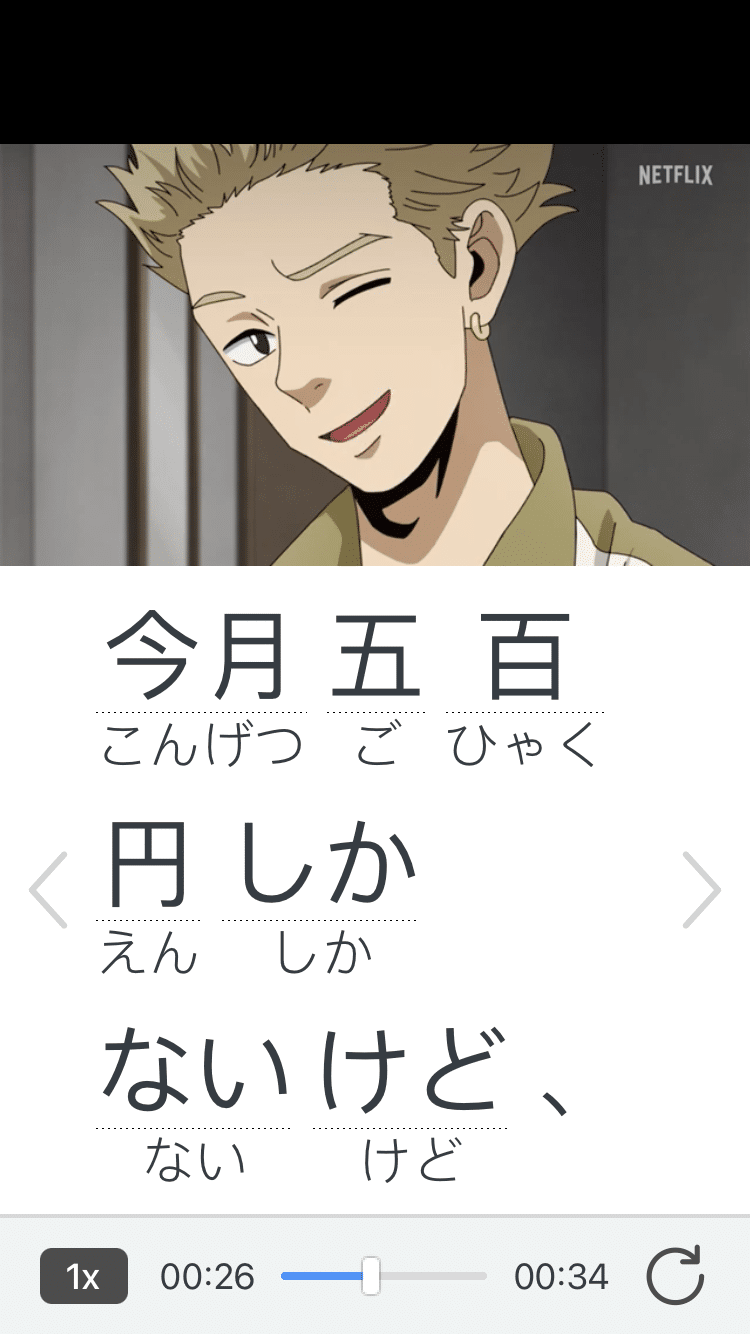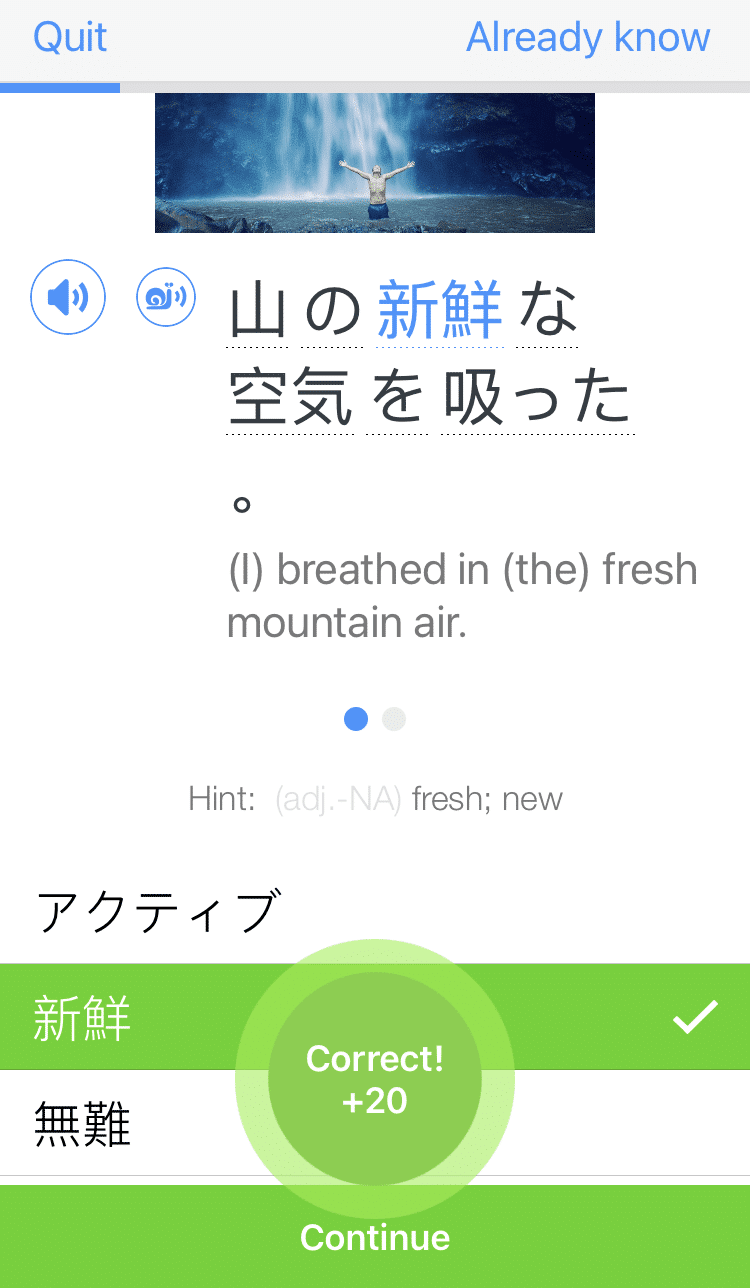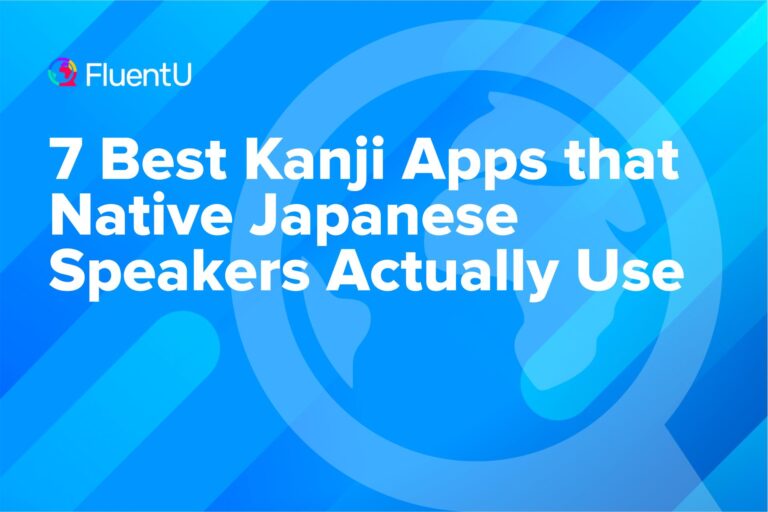Contents
- How to Conjugate the Japanese Te Form
- How to Use the Japanese Te Form
- 1. To ask someone to do something
- 2. To link two phrases
- 3. To ask permission to do something
- 4. To say “even if…”
- 5. To express that something is forbidden
- 6. To express regret
- 7. To say what you’re sorry for
- 8. To express willingness to try
- 9. To express giving and receiving
- 10. To describe one action, then another as a result
- 11. To express an ongoing action or a current state of being
- And One More Thing...
Japanese Te Form: The Complete Guide to Its Conjugations and 11 Usages

If you’ve been learning Japanese for any length of time, you’ve probably stumbled across the Japanese te form.
It’s a tiny but extremely multifaceted word.
Basically, it’s a verb and adjective conjugation you can use to politely make requests, link sentences together, say that an action is happening at the present moment (-ing) and more.
In this blog post, you’ll learn 11 usages of the Japanese te form and how to correctly conjugate it.
Download: This blog post is available as a convenient and portable PDF that you can take anywhere. Click here to get a copy. (Download)
How to Conjugate the Japanese Te Form
The て form takes the dictionary form of the Japanese verb and substitutes the ending る syllable with て. For instance:
食べる (たべる) → 食べて (たべて)
見る (みる) → 見て (みて)
Simple, right?
However, not all dictionary forms end in る. Here’s a breakdown of how other verbs convert to the て form:
Verbs ending in す have their final syllable replaced with して:
わかります → わかりまして
話す (はなす) → 話して (はなして)
Verbs ending in く have their final syllable end in いて:
書く (かく) → 書いて (かいて)
焼く (やく) → 焼いて (やいて)
Verbs ending in う, る or つ have their final syllable end in って:
使う (つかう) → 使って (つかって)
乗る (のる) → 乗って (のって)
待つ (まつ) → 待って (まって)
Some versions of the て form will end with んで or いで. Verbs ending in む, ぶ and ぬ have their final syllable replaced with んで.
読む (よむ) → 読んで (よんで)
遊ぶ (あそぶ) → 遊んで (あそんで)
死ぬ (しぬ) → 死んで (しんで)
(Note that 死ぬ is the only common modern Japanese verb that ends with ぬ, so you won’t really come across this last example much, if at all.)
Verbs ending in ぐ have their final syllable replaced with いで.
泳ぐ (およぐ) → 泳いで (およいで)
嗅ぐ (かぐ) → 嗅いで (かいで)
Still with me? Great!
It’s not that difficult once you remember which versions of the て form go with which dictionary form endings. Mind you, there are still irregular verbs to contend with.
Fortunately, there are only three:
する → して
来る (くる) → 来て (きて)
行く (いく) → 行って (いって)
Despite being labeled “irregular,” these are such common Japanese verbs that I doubt you’ll have trouble remembering them.
How to Use the Japanese Te Form
Now that we’ve handily covered how to express the て form of a Japanese verb, the next thing to learn is how and when to use it.
1. To ask someone to do something
The most recognizable usage for beginning students is when someone’s asking someone else to do something, and it’s followed by ください:
待ってください。
(まって ください。)
Please wait.
助けてください。
(たすけて ください。)
Please help.
読んでください。
(よんで ください。)
Please read.
You don’t always need to use ください at the end if you’re being less formal. Likewise, don’t mistake ください for the word “please” as it only comes at the end of sentences.
2. To link two phrases
When building a complex sentence, you usually need to link two phrases. This is another popular use for the て form.
One you’ve probably heard on a Japanese TV show would be someone announcing that they were leaving, but with the intention of returning, as in “行ってきます!(いってきます!)” — “I’m leaving!”
Other examples would be:
本を買って家に帰る。
(ほんを かって いえに かえる。)
Buy the book and go home.
地図を読んでそこに行く。
(ちずを よんで そこに いく。)
Read the map and go there.
3. To ask permission to do something
This is another usage that may be familiar to beginning students who’ve had exposure to conversational examples found in popular anime or dramas. It’s the way Japanese speakers may express a desire or ask for permission.
これを食べてもいいですか?
(これを たべても いい ですか?)
Can I eat this?
この本を読んでもいいですか?
(この ほんを よんでも いい ですか?)
May I read this book?
It’s not uncommon to have the ですか portion dropped in informal Japanese if the meaning is understood contextually.
4. To say “even if…”
Sometimes, you’ll need to express the concept that even if one thing happens, something else won’t. Usually, the context is that the outcome is the opposite of what’s expected. Here’s how you’d say that:
冗談を言っても、彼は笑いません。
(じょうだんを いっても、かれは わらいません。)
Even if you tell a joke, he won’t laugh.
たくさん食べても、太りません。
(たくさん たべても、ふとりません。)
Even if I eat a lot, I won’t get fat.
5. To express that something is forbidden
When trying to state that something isn’t possible or allowed, you’d pair the て form of the verb with は いけません or, if being more casual, は いけない.
Saying that something “won’t go” in Japanese is similar to the English phrase “that doesn’t fly,” indicating that something isn’t allowed or acceptable.
これを食べてはいけません。
(これを たべては いけません。)
Don’t eat this.
その本を読んではいけない。
(その ほんを よんでは いけない。)
Don’t read that book. (Casual)
6. To express regret
Placed before the word しまいました, the Japanese て form can express that something happened that you didn’t intend or have regrets about.
It’s related to the common exclamation しまった! that you might hear in some television shows or movies—often translated as “Darn it!” in English.
While you can use て しまった in less formal settings, the て しまいました usage is more appropriate for polite company.
テレビを買ってしまいました。
(てれびを かって しまいました。)
I didn’t mean to buy that TV.
鍵が壊れてしまった。
(かぎが こわれて しまった。)
The key is broken. (Informal)
7. To say what you’re sorry for
When you make an error or do something you regret, you’d often say すみません (Sorry!). If you want to be specific about what it is you’re apologizing for, you’d state that using the て form.
鍵を壊してすみません。
(かぎを こわして すみません。)
I’m sorry I broke the key.
テレビを落としてすみません。
(てれびを おとして すみません。)
I’m sorry I dropped the television.
8. To express willingness to try
By placing みます after the て form, you can say that you’re willing to try something.
Note that when using this form of the verb 見る (みる) — to watch or see, you don’t write it out with the kanji. Only use the hiragana.
これを食べてみます。
(これを たべて みます。)
I’ll try to eat this.
本を書いてみます。
(ほんを かいて みます。)
I intend to write a book.
9. To express giving and receiving
In Japanese, there are two ways to express the act of giving.
When you’re giving something to someone else or doing them a favor, you’d use あげる.
If something is being given to you, you’d use くれる.
君に本を買ってあげます。
(きみに ほんを かって あげます。)
I’ll buy you a book.
妹は私にプレゼントを買ってくれた。
(いもうとは わたしに ぷれぜんとを かって くれた。)
My sister bought me a present.
10. To describe one action, then another as a result
When you’re doing one thing and then doing another, you can connect the sentences with the て form.
Sometimes, you insert から (after, since) in between if you feel it needs to be specified, but you can often leave it out if the context is already clear.
先生を手伝ってから、家に帰りました。
(せんせいを てつだってから、いえに かえりました。)
After helping the teacher, I came home.
林檎を買って、食べました。
(りんごを かって、たべました。)
I bought an apple and ate it.
11. To express an ongoing action or a current state of being
To say that you’re currently doing something, you can connect the て form with the verb います (to be).
This is the Japanese equivalent of the English ending -ing.
You use this when using a transitive verb in which someone or something is doing the action. The object of that action is denoted by を:
妹はパンを焼いています。
(いもうとは ぱんを やいて います。)
My sister is baking bread.
兄が水をこぼしています。
(あにが みずを こぼして います。)
My brother is spilling water.
When using an intransitive verb in which the action has occurred and is now simply expressing a state of being, you use the same form but make sure that the subject is noted with the Japanese particle が:
パンが焼けています。
(ぱんが やけて います。)
The bread is baked.
水がこぼれています。
(みずが こぼれて います。)
The water is spilled.
Congratulations—you can now correcly use the Japanese te form in 11 unique ways!
Now, it’s time to get out and practice in the real world. Book a trip to Japan, chat with your language partner or watch native Japanese media. You’ll find loads of sentences that use the te form, especially if you’re using an immersion program like FluentU.
FluentU takes authentic videos—like music videos, movie trailers, news and inspiring talks—and turns them into personalized language learning lessons.
You can try FluentU for free for 2 weeks. Check out the website or download the iOS app or Android app.
P.S. Click here to take advantage of our current sale! (Expires at the end of this month.)

Soon, you’ll be using the Japanese te form like a native!
Download: This blog post is available as a convenient and portable PDF that you can take anywhere. Click here to get a copy. (Download)
And One More Thing...
If you love learning Japanese with authentic materials, then I should also tell you more about FluentU.
FluentU naturally and gradually eases you into learning Japanese language and culture. You'll learn real Japanese as it's spoken in real life.
FluentU has a broad range of contemporary videos as you'll see below:

FluentU makes these native Japanese videos approachable through interactive transcripts. Tap on any word to look it up instantly.

All definitions have multiple examples, and they're written for Japanese learners like you. Tap to add words you'd like to review to a vocab list.

And FluentU has a learn mode which turns every video into a language learning lesson. You can always swipe left or right to see more examples.

The best part? FluentU keeps track of your vocabulary, and gives you extra practice with difficult words. It'll even remind you when it’s time to review what you’ve learned. You'll have a 100% personalized experience.
Start using the FluentU website on your computer or tablet or, better yet, download the FluentU app from the iTunes or Google Play store. Click here to take advantage of our current sale! (Expires at the end of this month.)







